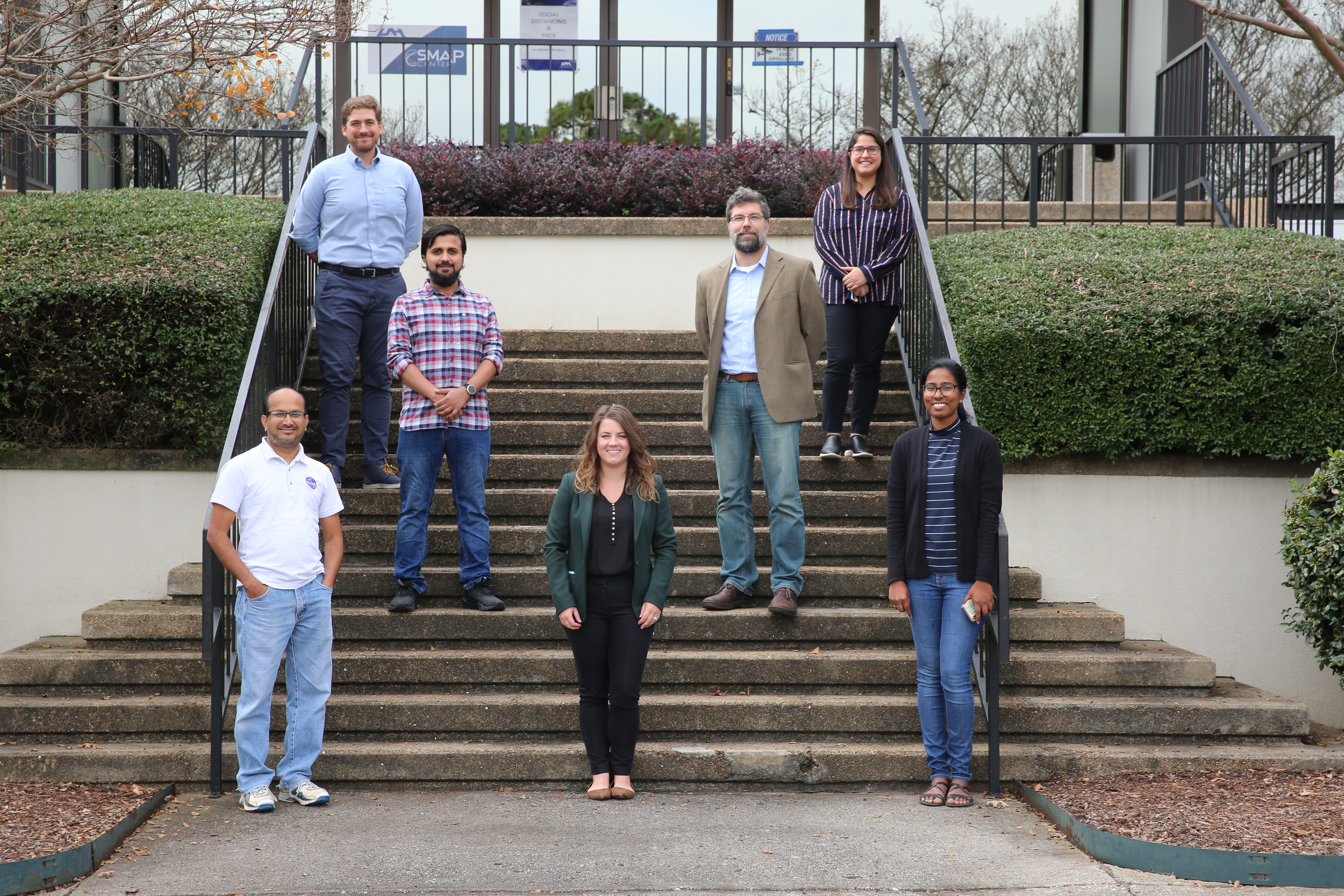Air pollution in Thailand becomes a problem when the low temperatures and calm winds during the Asian monsoon dry season, and air pollution from forest fires and agricultural burning, create a cross-boundary issue in the Lower Mekong Delta.
The new app, called SERVIR-Mekong Air Quality Explorer, enables large-scale monitoring of air quality in Thailand by using NASA satellite Earth observations and modelled data. The new app will enable quicker mitigation steps and air quality improvements. Current Thai efforts heavily rely on ground-based monitoring, which has limited spatial coverage leading to gaps in information.
It was cooperatively developed by entities including the UAH Earth System Science Center (ESSC) and the NASA SERVIR Science Coordination Office located in the National Space Science Technology Center in UAH’s Robert “Bud” Cramer Research Hall. They worked closely in the scientific development of the application with the Universities Space Research Association (USRA), including UAH alumnus Dr. Pawan Gupta; NASA; and the Asian Disaster Preparedness Center (ADPC).
The app was co-developed with the Royal Thai Government Pollution Control Department (RTGPCD) and Geo-Informatics and Space Technology Development Agency (GISTDA), which is Thailand’s NASA equivalent.
SERVIR works with regional partners, called hubs, around the world to build capacity to use satellite Earth observations and geospatial technologies to address environmental challenges.
“In April of 2019, SERVIR-Mekong initiated a collaboration with the RTGPCD to improve air quality monitoring and forecasting in Thailand,” says Amanda Markert, an ESSC research scientist and NASA/SERVIR-Mekong regional science coordination lead who manages SERVIR-Mekong activities from the UAH/NASA side including air quality work.
“Through this effort, the SERVIR-Mekong team partnered with RTGPCD to leverage global forecast models and satellite observations to more effectively monitor and forecast air quality in Thailand.”
The Air Quality Explorer tool uses NASA’s global aerosol forecasts from the Goddard Earth Observing System (GEOS). The GEOS assimilates Earth observations from multiple satellites.
“The air quality explorer uses outputs from GEOS and calibrates against local ground measurements in Thailand using an advanced machine learning technique to retrieve biased corrected air quality forecasts 72 hours in advance,” Dr. Gupta says. “The app has been added to the RTGPCD website home page and will be used to more comprehensively monitor, advise and take actions to mitigate air quality in the country.”
RGTPCD is mandated to monitor and issue Thailand air quality advisories. The new app builds upon existing efforts. Forecasts and satellite observations of air quality conditions will be used to issue advisories and take necessary mitigation actions.
“We have stepped into the world of technology. We look and understand the world from space through satellite technology,” says Athapol Charoenshunsa, director general of the RTGPCD. “Not only the past and the present, we shall also tell everyone in the future to prepare for environmental pollution properly and effectively.”
UAH supported the new app’s coordination, science development, consultations with the RTGPCD and outreach activities. The UAH SERVIR project principal investigator is Dr. Robert Griffin.
Besides Markert, who coordinated science, capacity building and outreach activities, and supported developing training materials, the UAH SERVIR-Mekong team included Dr. Gupta and Githika Tondapu at USRA, who led the science and app development; Andrea Nicolau, SERVIR-Mekong regional science associate, and Tim Mayer, SERVIR-Hindu-Kush Himalaya regional science coordination lead, both of whom supported app development and coordination; and Biplov Bhandari, SERVIR-Mekong graduate research assistant.
In addition to app development, the UAH SERVIR-Mekong team has supported training and youth outreach efforts. Dr. Gupta conducted two training sessions on the Remote Sensing of Air Quality. The first was for the ADPC in July 2019. The second was in August 2020 for the RTGCD and GISTDA. The training was supported by NASA Applied Remote Sensing Training and the Committee of Earth Observation Satellites.
In February of 2020, SERVIR-Mekong, RTGPCD, the United States Agency for International Development (USAID) and the Department of State’s Young Southeast Asian Leaders Initiative hosted Smogathon Thailand 2020, at which Markert presented on NASA’s air quality work. The event brought together young professionals, students and technical experts to tackle air pollution using satellite data.
A joint partnership between USAID and NASA, SERVIR works with organizations around the world to use space-based observations to inform public policy, adapt to the impacts of global change and better plan for a sustainable future.
Led by the ADPC, since 2015 SERVIR-Mekong has been working in partnership with leading regional organizations across the five lower Mekong countries of Vietnam, Cambodia, Laos PDR, Myanmar and Thailand to harness Earth observations to help address regional challenges. At UAH, ESS staff support these SERVIR hubs.
About The University of Alabama in Huntsville
Launched from America’s quest to conquer space, The University of Alabama in Huntsville is one of America’s premier doctoral-granting, research-intensive universities. Located in the second largest research park in the United States, UAH has robust capabilities in astrophysics, cybersecurity, data analytics, logistics and supply chain management, optical systems and engineering, reliability and failure analysis, rotorcraft and unmanned systems, severe weather, space propulsion and more. UAH prepares students for demanding positions in engineering, the sciences, business, nursing, education, the arts, humanities and social sciences.




